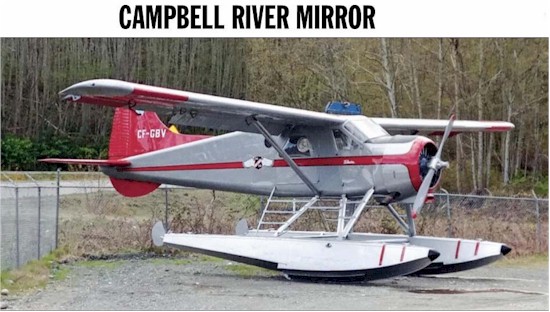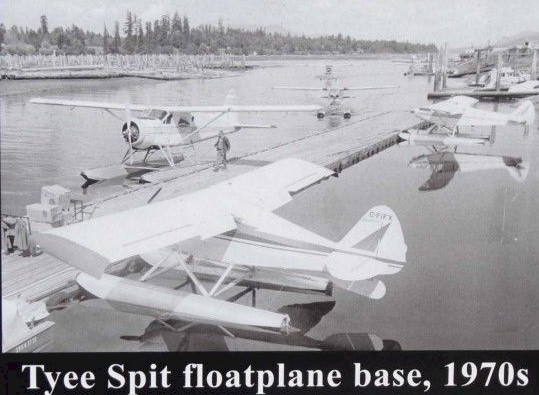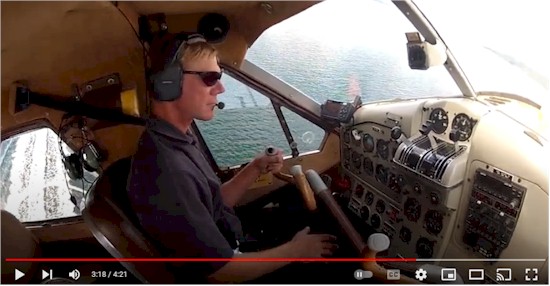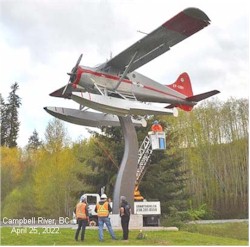|
Decade-long effort to install floatplane tribute to Campbell River aviation soars. The long-awaited installation of the famous DeHavilland Beaver floatplane was hoisted on a display pedestal on Monday, April 25 at the Campbellton entrance to Campbell River, commemorating a significant period in the history of the city. The Tyee Spit, a long strip of land which juts out into the Campbell River estuary was considered the busiest floatplane base in Canada in 1966. The much-admired de Havilland Beaver, amongst many aircraft that used the Spit, was known as the 'Workhorse of the North.' Although that famous plane was first constructed in 1947, it was no longer built by de Havilland Canada after 1967. Still, the Beaver continued to lead the way in the charter industry for the next half century. See full article at: www.campbellrivermirror.com |
 |
 |
|
We found the video, linked below, posted by Jim Howard on YouTube. It shows Jim at the controls of a DeHavilland Beaver floatplane taking off at Campbell River in 2012. Editors' Note: The aircraft in the video is not the one mounted at the Campbellton entrance to Campbell River. This one is still flying today for Northwest Seaplanes of Seattle, Washington. |
 |
|
Some Australian Aviation Inventions Distance measuring equipment (1944/45) Black box flight recorder (1953) Inflatable escape slide and raft (1965) Additional info at: |
|
UK budget airline, EasyJet, will remove a row of seats from some of its planes so it can operate flights with fewer cabin crew it announced. The airline said it will remove the last row of seats on some of its Airbus A319 aircraft, limiting the number of passengers on board to 150. By removing the seats, it means the aircraft will be able to operate with three cabin crew members instead of four. According to UK regulations, airlines must provide one cabin crew member for every 50 passengers on board an aircraft. |

